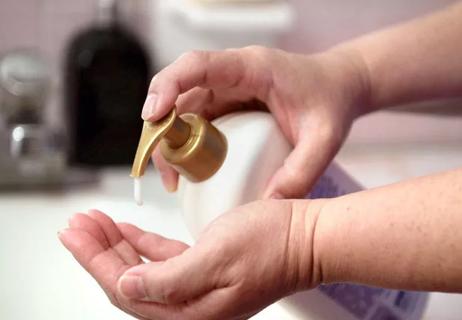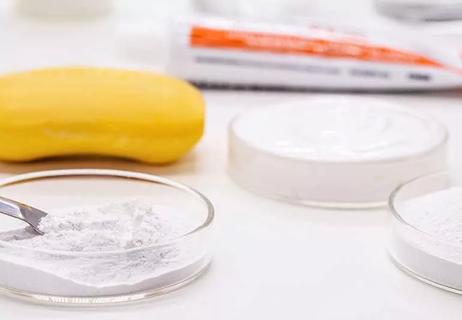Time flies when you’re having fun. Maybe that’s why it always feels like cold and flu season is either upon us or nipping at our heels. But even if the weather’s more fine than frightful, it’s never a bad time to protect yourself (and the people around you) from germs and viruses.
Advertisement
Cleveland Clinic is a non-profit academic medical center. Advertising on our site helps support our mission. We do not endorse non-Cleveland Clinic products or services. Policy
But to do that successfully, you need to know a bit about the conditions you’re trying to steer clear of, how germs and viruses spread and how to avoid infecting others. After all, knowledge is power. We turned to family medicine physician Matthew Goldman, MD, to learn more about six common illnesses and how to avoid them.
The common cold
The term “cold” is shorthand for a virus that attacks your upper respiratory system: That is, your nose, throat, sinuses and windpipe. There are actually more than 200 viruses than can cause a cold, but according to Dr. Goldman, the same basic rules of prevention apply across the board.
Here’s what you need to know about the common cold:
- You can spread a cold a couple days before demonstrating symptoms, but you’re probably most contagious during the first 48 to 72 hours of feeling sick.
- It’s possible to spread your cold for up to two weeks.
- The common cold spreads through physical contact or respiratory droplets.
- You can avoid infecting others by staying home until your symptoms improve and your fever (if you have one) resolves. It’s also important to practice good hand hygiene. That means washing your hands thoroughly and frequently with soap and water and using alcohol-based hand sanitizers when needed. Coughing or sneezing into the crook of your arm will limit the spread of respiratory droplets. Wearing a mask is even more effective.
The flu
Like the common cold, the flu is caused by a virus. Here’s what you need to know about it:
- You can spread the flu as many as four days before demonstrating any symptoms, but you’re probably most contagious during the first 48 hours of feeling sick.
- The flu is usually contagious for up to 10 days.
- The flu can spread through respiratory droplets. It can also spread through physical contact with people or even surfaces.
- Dr. Goldman is unequivocal: The best way to prevent the flu is to get your flu shot every year. If you do get sick, protect others by staying home until you start feeling better and have been fever-free for at least one full day. Keeping your hands clean and avoiding contact with other people is key. While coughing or sneezing into the crook of your arm does minimize the spread of respiratory droplets, the best thing you can do to protect your friends and family is wearing a mask.
Bronchitis
Unlike colds and flus, bronchitis has multiple different causes. That’s because a lot of things can cause your airways to become inflamed.
If your bronchitis is due to a condition that isn’t contagious, like asthma, gastroesophageal reflux disease or smoke inhalation, you don’t have to worry about passing it on to other people. But there are plenty of contagious conditions — like COVID-19, the flu or whooping cough (pertussis), for example — that can cause bronchitis, too.
- If your bronchitis is caused by a contagious illness, it’s safe to assume you were infectious a couple days before demonstrating symptoms and will be most contagious during the first 48 to 72 hours of feeling sick.
- Depending on what’s causing your bronchitis, you may be contagious for up to three weeks.
- If you’re experiencing bronchitis as a complication of a contagious illness, you should follow all of the same precautions you would to avoid spreading that virus or bacteria. That usually means isolating yourself until your symptoms improve and your fever (if you have one) disappears. It also means social distancing, washing your hands thoroughly and frequently with soap and water, and using alcohol-based hand sanitizers when you don’t have access to a sink. Coughing into the crook of your arm is helpful, but masking is the best way to protect the people around you from the underlying infection.
Strep throat
Unlike colds and flus, strep throat is a bacterial infection. Dr. Goldman says it’s important to see a healthcare provider if you think you have strep throat because leaving it untreated occasionally causes severe complications like scarlet fever, rheumatic fever or even heart damage.
- Strep throat can be infectious for between two and five days before you start feeling sick, but you’re most contagious within the first 48 to 72 hours of experiencing symptoms.
- You usually stop being contagious within 24 to 48 hours of starting antibiotics. But if untreated, you could be infectious for up to four weeks.
- Strep throat spreads in many different ways. It can travel through respiratory droplets and live on surfaces, but it can also cause infected sores on your skin. The fluid from those sores is also contagious, which makes it possible to spread the bacteria through physical contact.
- If you’re diagnosed with strep throat, Dr. Goldman urges you to stay home for at least two days after starting antibiotics. To avoid catching strep throat, be sure to never share your cups or eating utensils with other people. Coughing or sneezing into a tissue is the best option, but if you don’t have access to a tissue, use the crook of your arm — not your hands. And, of course, make sure you’re keeping your hands clean.
Pneumonia
Pneumonia means that you have inflammation and fluid in your lungs. That can happen when you have a viral, bacterial, fungal or, in rare cases, protozoal infection. But the most common causes of pneumonia are the flu, COVID-19 and pneumococcal disease.
Dr. Goldman explains that there’s a pneumonia vaccine, but it’s not for everybody. Talk to a healthcare provider to find out if it’s the right choice for you and your loved ones.
- Like bronchitis, pneumonia itself isn’t contagious, but the illness that caused it might be. If a bacteria or virus caused your pneumonia, it’s safe to assume you’ll be most contagious within the first 48 to72 hours of getting sick.
- It’s possible to be contagious with pneumonia for up to three weeks, depending on what kind of pneumonia you have and the kind of treatment you’re getting.
- Both viral and bacterial pneumonias can spread through respiratory droplets and touching infected surfaces. But there’s good news: Fungal pneumonia isn’t contagious.
- If your healthcare provider diagnoses you with pneumonia caused by a contagious condition, it’s important to practice hand hygiene, social distancing and masking. You should also make a point of disinfecting any surfaces you touch frequently.
Stomach flu (viral gastroenteritis)
Despite the name, the stomach flu isn’t actually a flu at all: It’s actually a condition called viral gastroenteritis. This highly contagious condition affects your stomach and intestines. In the same way that many viruses can cause the common cold, many different viruses can cause gastroenteritis. But the most common causes are norovirus and rotavirus.
- Generally speaking, you’re contagious for one or two days before your gastroenteritis symptoms start.
- If you have a healthy immune system, stomach flu usually resolves within a couple of days. But according to Dr. Goldman, feeling better doesn’t necessarily mean you aren’t contagious. You should expect to continue shedding the virus in your poop (stool) for up to two weeks after your symptoms resolve.
- The stomach flu is a fecal-oral illness, which is exactly as gross as it sounds. The virus sheds in the poop and vomit of infected people. Microscopic particles end up on surfaces, on hands and yes, in food and water.
- To avoid getting other people sick, wash your hands with soap and water a lot, but especially after going to the bathroom, changing a diaper or touching food. You also need to clean and disinfect any surfaces you regularly touch. That includes clothing, bed linens and the toilet. Try to avoid sharing utensils or handling food that other people are going to eat. It’s best to isolate yourself from others until your symptoms have been gone for two days. Just remember that you’ll likely be infectious for another two weeks.
Protecting yourself protects others
Viruses, bacteria, fungi, parasites … it’s a jungle out there. Our immune systems have to work hard to protect us from communicable illnesses, especially during cold and flu season. Healthy habits like a nutritious diet, regular exercise and good hygiene can help keep us safe.
But we all get sick eventually. And when we do, it’s important that we do our part to stop the spread.
As we all learned during the COVID-19 pandemic, the surest way to stop the spread of infectious diseases is to stay home when you aren’t feeling well. When you are out and about, practice social distancing, keep your hands washed and disinfect any surfaces you touch. And don’t forget to cover your cough or sneeze with your elbow or, preferably, a mask.










